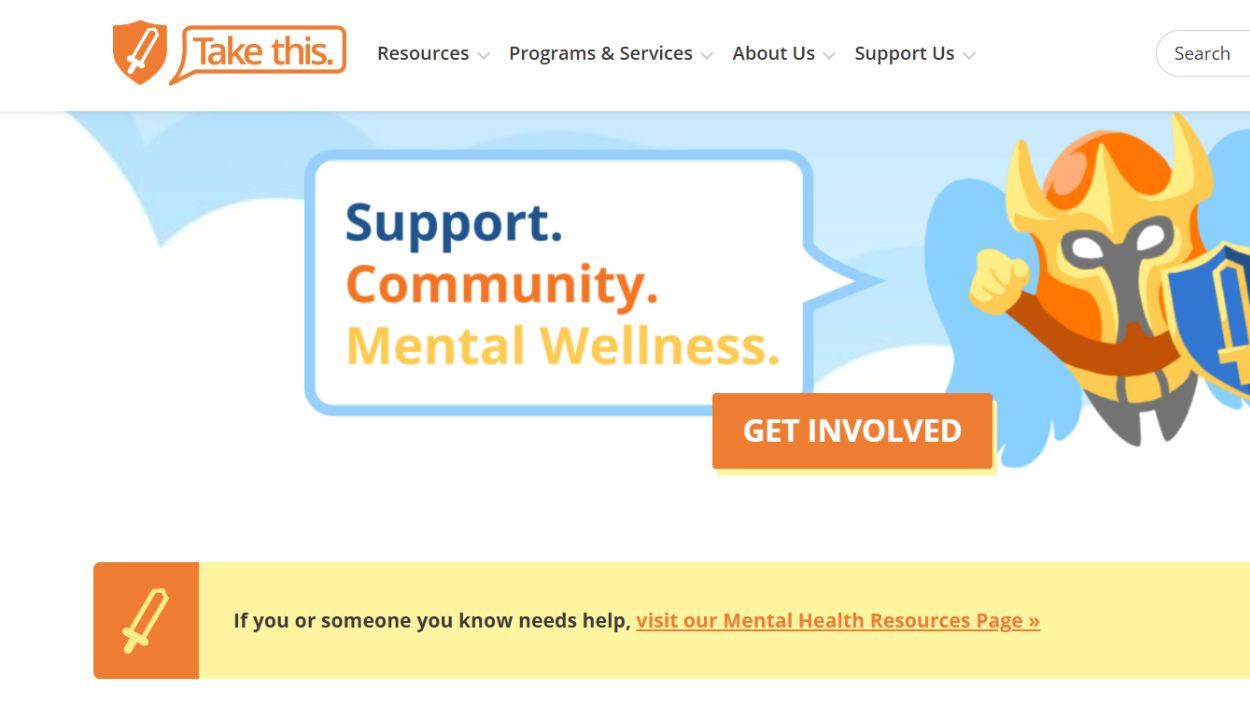At the heart of every fan culture lies a deep-seated passion—a consuming fire that drives devotees to fully immerse themselves in the world of their idols. From crafting intricate, era-inspired costumes to dissecting hidden meanings in tweets, being part of a fandom is more than just a hobby; it’s a lifestyle rich with community, creativity, and emotional fulfillment.
Yet, such an intense devotion can sometimes veer into darker territories. While fandoms can provide immense emotional support and a platform to celebrate artistry, they are not without their pitfalls. For example, a September 2023 survey by Sportsbook Review highlighted one such issue within sports fandom, revealing that 39.2% of NFL fans have witnessed a crime at or around an NFL stadium.
No fandoms are entirely immune—toxic behaviors and real-world dangers can emerge from the shadows of even the most unsuspecting fan communities. In this exploration, we examine the paradox of fan culture—where unparalleled dedication meets potential peril, shaping experiences that are both profoundly enriching and unsettlingly hazardous.
The Genesis and Evolution of Fan Culture
Fan culture encompasses communities, practices, and behaviors arising from shared enthusiasm across various domains—sports, entertainment, gaming, music, and beyond. Passionate followers create and share fan-generated content, participate in online forums and social media discussions, attend conventions and meet-ups, engage in cosplay, and devise other tributes celebrating their particular interests.

Modern fandom’s origins trace back to the early 20th century when groups of ardent followers publicly grieved the “death” of fictional detective Sherlock Holmes. Mourning fans wrote and published their own stories to “resurrect” their beloved character.
Fast-forward to today, and these communities have grown exponentially in size and scope, propelled by the Internet. Deep emotional investment in shared interests sparks unique norms, languages, and rituals, enhancing followers’ sense of belonging and identity.
However, as fan cultures flourish and intensify, a critical question comes to light: what happens when enthusiasm takes a darker turn?
Toxic Fandom: When Admiration Turns Into Anarchy
LeBron James’ 2010 departure from the Cleveland Cavaliers to join the Miami Heat sparked one of sports history’s most dramatic reactions. Cleveland fans perceived his move as a personal betrayal despite James’ seemingly innocent goal of winning championships alongside superstars Dwyane Wade and Chris Bosh.
James’ Miami stint proved fruitful. He secured two NBA titles before his 2014 return to Cleveland. He then led the Cavaliers to four straight Finals, clinching the 2016 championship.
James’ Return To Cleveland
But it’s the story of his first return to Cleveland as an oppositional player that really shows how quickly admiration can spiral into anarchy. CHC’s own Creshonda Smith was there in the thick of it, right in the arena, and her account paints a vivid picture of just how intense fan reactions can get.
“I was in the arena during LeBron’s first game back to Cleveland after he left for Miami. It was so hostile in there!” Creshonda recalls. The atmosphere she describes was far from the usual spirit of game day. “I noticed way more security guards were present compared to what you see at a normal game. Hate signs were everywhere, people wearing his burned jersey, and the obscenities were flying.”

The scene escalated to the point where one fan, overcome by emotion, rushed the court and charged at LeBron. Initially, it looked like an attack, but it turned out to be a desperate plea for him to return to Cleveland.
“I’ve never been a part of such an aggressive setting.”
“I’ve never been a part of such an aggressive setting. When they announced his name, you could barely hear it because everyone was yelling so loudly, and security was holding them back as they were cursing him out. It was wild. They were truly hurt that he left.”
LeBron aside, toxic fandom is a serious issue plaguing news cycles with distressing regularity. Headlines like “Inside the Premier League Unit Hunting Online Trolls Who Threaten Players” or “Josh Hartnett Reveals How Toxic Fandom Made Him Walk Away From Hollywood” tell the tale of what comes along with living in the limelight.
Far from outliers, these stories reflect a broader issue where enthusiasm for sports and entertainment often devolves into threats, harassment, and stalking.
Alarmingly, some situations escalate to deadly outcomes.
Crossing the Line Into Stalking
John Lennon’s 1980 murder exemplifies the dangerous transformation of fan admiration into hostility. Mark David Chapman, once a fervent Beatles admirer, fatally shot Lennon outside his New York City home.
Chapman’s dramatic shift exposes a critical tipping point where reverence devolves into something sinister. His initial admiration grew into an all-consuming fixation, ultimately clouding his judgment and leading him to justify Lennon’s murder. Chapman’s arrest and subsequent life sentence raise crucial questions about the mechanisms driving such intense admiration into dangerous territory.
Toxic fandom isn’t merely reserved for the famous or celebrated—regular folks like you or me could find ourselves mixed up in the madness.
The Dangerous Dynamics of Doxxing
At just 15, a young man in Australia found himself in a nightmare scenario that began innocently enough with an online game of Call of Duty. A heated argument with another player quickly escalated when his personal details, including his IP and home address, were shared with the entire game lobby. What followed was weeks of relentless harassment that intruded into his real life in the most unsettling ways.
Alex faced daily barrages of up to 50 unsolicited deliveries. Some drivers demanded payment upon arrival, draining his bank account and intensifying his stress. Constant interruptions kept him on high alert, with every knock potentially signaling a new threat. Occasionally, trivial items like sauce packets would arrive.

This onslaught resulted from doxxing—the malicious publication of private information online to incite harassment. Alex’s shared enthusiasm for gaming led to tangible consequences: a front yard littered with unwanted items and a distressed family.
Weeks of disruption finally ended when Alex and his family threatened police involvement. However, lingering fear persisted as the doxxers still possessed his address. While the harassment ceased, anxiety remained—a constant reminder of his ordeal.
However, doxxing pales in comparison to swatting, as you’ll see through the story of one man who innocently lost his life to the sinister hoax.
Swatting and its Fatal Fallout
In December 2017, a dispute over a minor bet in an online game of Call of Duty escalated into a fatal encounter. What started as an argument between two gamers about $1.50 set off a chain of events leading to an innocent man’s death after a swatting call. In this dangerous hoax, someone falsely reports a severe crime or situation that prompts an armed police response.
The argument led one gamer to seek revenge by initiating a swatting attack. With the help of an accomplice known for making such calls, they reported a severe crime at an address provided during their heated exchange. However, the address was incorrect, leading law enforcement to the wrong house—the home of Andrew Finch in Wichita, Kansas.
Unaware and uninvolved, Finch answered his door to find a SWAT team poised for action and expecting a violent scene. The situation escalated quickly, and Finch was fatally shot in the confusion.
Swatting calls typically involve deceiving emergency services into thinking there’s an immediate threat at a specific location, often using caller ID spoofing to make the threat appear legitimate. It puts innocent lives at risk, strains emergency services, and can lead to deadly misunderstandings.
What Ignites the Intensity of Fan Culture?
As we’ve seen, toxic fandom manifests in various forms. From doxxing to swatting and harassment to stalking, the internet’s mask makes extreme behaviors feel less risky, challenging us to find a balance between digital freedom and accountability.
The veil of anonymity online emboldens people, for better or worse. It allows for uninhibited self-expression and shields those pushing boundaries into harmful territories.

Fan communities, while hubs of shared passion, can amplify extreme voices. When fellow enthusiasts cheer on or reward aggressive behaviors within these groups, it sets a precedent that can escalate quickly. Members may find themselves vying for attention through increasingly extreme acts, reinforcing a cycle that can spiral out of control.
The media often exacerbates this issue, focusing on the most sensational aspects of fan interactions. High-profile disputes and fandom drama drive clicks and ratings, potentially encouraging more of the same behavior among fans.
Proactive Steps To Mitigate Toxic Fandom Online
The online gaming world is a hotbed of activity regarding toxic fandom. It’s a far cry from my youth when an argument spawned from a game of 007 led to a few “your mama” jokes.
However, some online communities have found ways to mitigate toxic behavior. We spoke with Sachin, who runs one of the largest Minecraft servers, Purple Prison. Founded in 2014, the community has over 5 million participating players.
“As you can imagine, with such a huge community, we’ve definitely dealt with our share of toxic behavior—it’s pretty much part of the online gaming world at this point. But we’ve developed some strategies over the years to help curb it and keep things as positive as possible.” Purple Prison’s approach includes empowering community moderators, implementing quick responses to toxicity, maintaining clear rules with open communication, and rewarding positive behavior.
“We’ve put a lot of trust in the community itself. We’ve got dedicated members who help us moderate and set the tone. Positive behavior is rewarded, and we try to showcase those who make the community better.”
Their proactive stance extends to modern-day moderation tools: “We use a mix of automated tools and real people to catch toxic behavior early. We’ve set up systems that flag abusive language automatically, and then we can step in and review situations fairly quickly.”
Sachin emphasizes the importance of clear expectations: “One thing we’ve learned is that being upfront about rules and expectations helps a ton. We’re always communicating with the community, whether it’s through announcements or meetings, so people know what’s acceptable and what’s not.”
With the right strategies, online communities can foster a more positive environment, potentially mitigating the risks associated with toxic fandom. As Sachin notes, “We’ve found that rewarding players for good behavior, like teamwork or just being helpful, shifts the focus away from the toxic stuff. Players want to be recognized, and that creates a better vibe overall.”
Expert Opinions and Proactive Solutions for Toxic Fandom
In exploring fan culture’s dark undercurrents, we also spoke with Ehab Youssef, a licensed clinical psychologist, mental health researcher, and writer at Mentalyc. Youssef offers a nuanced view of how deeply identity can become entangled with fandom.
Youssef observes, “One of the core issues I’ve seen, and what some of my clients struggle with, is that identity gets tightly wrapped up in fandom. If someone’s love for a particular franchise or team becomes a central part of who they are, any criticism or differing opinion can feel like a personal attack.”
This psychological perspective sheds light on why fans may react so vehemently to perceived slights against their favorite subjects, viewing them not just as differing opinions but as personal affronts.

Youssef stresses the importance of maintaining a balanced approach to fan engagements. “As I tell my clients, it’s perfectly okay to love something deeply, but balance is critical. Getting too wrapped up in these external things can put unnecessary pressure on us to defend them at all costs, which isn’t healthy. Instead, find ways to engage that are fun and respectful. Seek out communities that promote positivity and inclusivity.”
Addressing toxic fandom also involves looking at the bigger picture and recognizing its roots in broader societal trends. Youssef adds, “It’s worth noting that toxic fandom reflects broader societal issues like tribalism and polarization. This means addressing it takes collective effort—not just from individuals but from platforms and creators who have the power to set the tone for their communities.”
Another community that addresses the issues head-on is the nonprofit organization Take This.
‘Take This’ Takes on Mental Health Within the Gaming Community
As we’ve seen within the gaming community, passion runs as deep as the lore of the games themselves, and mental health often takes a backseat. Take This is an organization dedicated to changing that narrative. With a mission focused on destigmatizing mental health issues among gamers and industry professionals, Take This sets a new standard for support within its community.
Their approach is holistic and refreshingly proactive. Take This works under the guiding principle that hope is a catalyst for healing. They’re not just talking about mental health but normalizing it. They actually recognize and validate the varied experiences within the gaming community—making sure that mental health discussions are as mainstream as the latest game release.

What really sets Take This apart is its commitment to both individual well-being and systemic change. The organization understands that addressing mental health requires more than good intentions; it needs concrete actions and changes at the organizational level.
A standout initiative is their Accelerate Program, designed to cultivate a new generation of game developers and mental health experts who prioritize ethical practices and digital well-being. And their mission is simple: make the gaming world a safer, more inclusive space.
The dedication of mentors like Dr. JC Lau and Jarryd Huntley accentuates the human touch in their mission. Tackling the root causes of mental health challenges in the gaming industry—be it stigma, toxic work culture, or lack of diversity—makes gaming a better experience and sets a gold standard for how industries should support mental health.
However, it doesn’t always take an entire organization to call for change. Even folks in the limelight can advocate for a safer, more mentally sound understanding within fan culture.
Chappell Roan Speaks Out Against Toxic Fandom ‘Superfans’
When Chappell Roan decided to take a stand against toxic fan behavior, she wasn’t just speaking up for herself—she was challenging a norm that’s been silently accepted for far too long. Through a couple of pointed TikToks, she asked her fans a simple yet profound question: Would you treat just any woman the way you treat me? Her message was clear: just because someone’s a public figure doesn’t strip away their right to respect and privacy.
“I don’t care that abuse and harassment, stalking, whatever, is a normal thing to do to people who are famous, or a little famous. I don’t care that this crazy type of behavior comes along with the job. … That doesn’t make it okay, that doesn’t make it normal,” Roan declared. She’s making a crucial point here: being in the limelight shouldn’t come with a side of harassment.
Roan is pushing for a culture shift. By being vocal, she’s not just setting boundaries but inviting other celebrities to join her in this fight—and they are. Finneas O’Connell, Noah Kahan, Shawn Mendes, Lizzy McAlpine, and Hayley Williams all rose to the occasion in support. They’re flipping the script on what’s considered “normal” in celebrity-fan interactions, saying, hey, let’s treat everyone—famous or not—with basic human decency.
And really, why should celebrities just accept harassment as part of their job? Roan argues that embracing her passion for music and art shouldn’t include tolerating abuse. “I chose this career path because I love music and art and honoring my inner child, I do not accept harassment of any kind because I chose this path, nor do I deserve it,” she wrote. That’s a powerful reminder that no career choice should ever be considered consent for mistreatment.
Supreme Court Addresses the Issue of ‘True Threats’
In a landmark case, the U.S. Supreme Court recently grappled with the fine line between free speech and digital harassment. The case of Counterman v. Colorado thrust the nation’s highest court into the murky waters of online threats, forcing a re-examination of the First Amendment in the digital age.
Billy Raymond Counterman stood accused of relentless digital pursuit. His arsenal? A barrage of “creepy” Facebook messages implying surveillance and ill-intent. Undeterred by blocks, Counterman’s persistence through multiple accounts ultimately led to stalking charges.
At the heart of this legal battle lay a crucial question: What truly constitutes a “true threat” unprotected by the First Amendment? Does the speaker need to understand the threatening nature of their words?

The Court’s Ruling
Justice Elena Kagan, penning the majority opinion, delivered a nuanced verdict. The Court ruled that for speech to cross the line into a true threat, prosecutors must prove the speaker was at least recklessly aware of their threatening tone. This introduces a subjective element to threat assessment, placing the speaker’s mindset under scrutiny.
This ruling resonates far beyond the courtroom, echoing through our increasingly digital lives. In an era where anonymous online interactions are commonplace, the Court’s decision provides a framework for evaluating threats without stifling free expression.
The verdict strikes a delicate balance. It shields folks from genuine harm while safeguarding the cornerstone of democracy—free speech. By establishing a recklessness standard, the Court makes sure that only those knowingly making threats face consequences, protecting everyday speech from overzealous interpretation.
This ruling offers some clarity for public figures often besieged by online vitriol. It illuminates the legal landscape, helping distinguish between harmful communications and protected speech. As we navigate the complex terrain of digital interaction, this decision serves as a guide, reminding us that even in the virtual world, our words carry weight and consequence.
Fandom: A Double-Edged Sword of Passion
As we’ve journeyed through the labyrinth of toxic fandom, from LeBron’s jersey-burning fiasco to Minecraft’s digital peacekeeping, one thing is crystal clear: fandom is a force to be reckoned with. It’s a rollercoaster of emotions, a kaleidoscope of creativity, and sometimes, let’s face it, a bit of a dumpster fire.
That’s also what makes it so fascinating.
We’ve seen the good (community-building!), the bad (doxxing drama), and the ugly (swatting gone terribly wrong). We’ve witnessed how a shared love for a detective in a funny hat can birth an entire subculture and how a heated gaming moment can spiral into real-world chaos faster than you can say “rage quit.”
So, where do we go from here? As fans, we’re at a crossroads. We can choose to be the toxic trolls lurking under the bridge of social media or the bridge builders, nurturing connections that span continents and console preferences.
At the end of the day, aren’t we all just trying to find our tribe? Whether you’re cosplaying as your favorite anime character, debating the finer points of Middle-earth lore, or simply bonding over a shared love of obscure 80s sitcoms, you’re part of something bigger than yourself.
So embrace the weird, celebrate the wonderful, and try to be better fans of one another.




